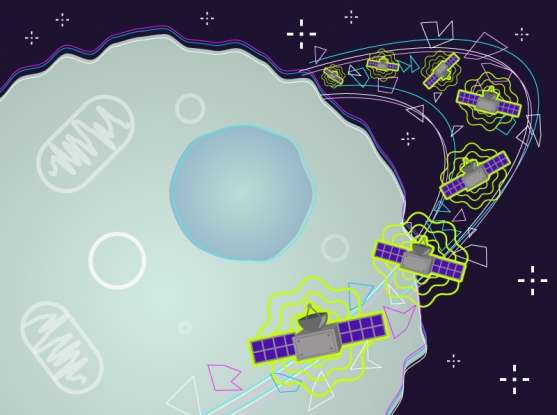New tools sift cancer sequences for microsatellite mutations

Two new computational tools, MSMuTect and MSMutSig, could help reveal how often mutations in common DNA features called microsatellites appear in, and contribute to, cancer.
Microsatellites—long stretches of short DNA repeats, such as TCGTCGTCG or ACACAC over and over—are common throughout the genome, both within and outside of genes. Researchers have linked inherited insertion and deletion mutations (also called "indels") in microsatellites to more than 40 inherited diseases, and clinical labs routinely test for spontaneous or acquired (a.k.a. somatic) indels in certain kinds of cancer. However, technical challenges have stymied efforts to use genome sequencing to systematically catalog cancer-relevant somatic microsatellite indel mutations.
In Nature Biotechnology, a team of researchers led by Yosef Maruvka and Gad Getz of the Broad Institute's Cancer Genome Computational Analysis group and Massachusetts General Hospital's Center for Cancer Research and Department of Pathology reveal two computational tools for detecting microsatellite indels in sequencing data from tumor cells. Dubbed MSMuTect and MSMutSig, the tools use statistical approaches to respectively a) identify microsatellite indels, and b) highlight genes harboring more of them than would be expected by chance.
Maruvka, Getz, and their collaborators tested the tools using whole exome sequence data from 6,747 tumors—representing 20 kinds of cancer—and matched normal tissues analyzed by The Cancer Genome Atlas. The two tools revealed more than 1,000 previously undescribed somatic microsatellite indels, as well as potential cancer-promoting indel "hotspots" within seven genes, including three not previously thought of as cancer drivers.
In addition, the team found that with MSMuTect they could correctly classify tumors based on their level of microsatellite instability (that is, a tumor's predisposition to developing microsatellite indels)—a feature of potential clinical importance.
MSMutTect and MSMutSig add to a large and still-growing sequence analysis toolkit developed by Getz and his colleagues for detecting and describing somatic mutations and other variations in cancer sequence data, including the original MutSig and MuTect (for characterizing point mutations), MutSigCV (which incorporates gene expression and other data to increase MutSig's accuracy), ABSOLUTE (for measuring a tumor sample's purity and looking for evidence of abnormal numbers of chromosomes), and GISTIC (for hunting down genomic regions with significant copy number alterations).
More information: Yosef E Maruvka et al. Analysis of somatic microsatellite indels identifies driver events in human tumors, Nature Biotechnology (2017). DOI: 10.1038/nbt.3966
Journal information: Nature Biotechnology
Provided by Broad Institute of MIT and Harvard




















